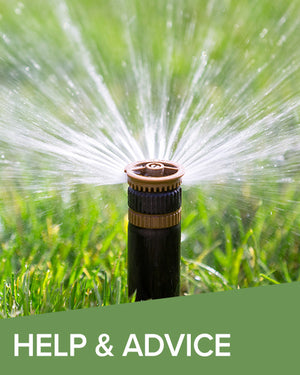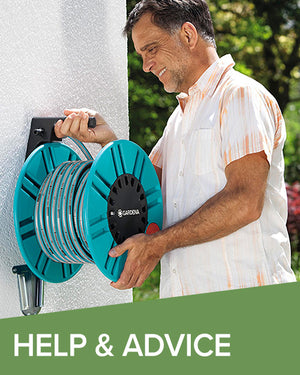How do you set oscillating sprinklers?
Oscillating sprinklers are powered by the water pressure coming from your household water supply. That means that you simply need to position it on your lawn, connect it to your hose pipe, and turn on the tap to get it working. In order to set up more precise watering, your oscillating sprinkler should have adjustable features that allow you to configure it to suit the area you want to water.
At a minimum, oscillating sprinklers should come with sliding tabs that allow you to adjust the oscillating action of the sprinkler. Some advanced models will allow you to adjust the individual nozzles on the sprinkler.
Oscillating sprinklers can also be connected to your automatic watering system. If set up currently with a water timer, you can sit back and relax and your garden is reliably watered all on its own.
Are oscillating sprinklers good?
Oscillating sprinklers offer a number of benefits, and many gardeners exclusively use this sprinkler to irrigate their entire garden. Though, they are not an absolutely perfect fit for every gardener and come with their share of disadvantages as well. Here are some pros and cons to keep in mind:
Pros
- Fanning water line ensures your garden receives the perfect about of moisture - saving it from erosion, puddles, and water waste.
- Expect consistent water coverage that is easily adjusted at the tap with the water flow.
- Water will easily get into far-reaching corners.
- Drops large amounts of water that mimics heavy rain.
Cons
- Not the best option for dry or hot conditions due to water evaporation.
- May be easily impacted by the wind as it sprays high in the air.
- Will not work well with low water pressure.
- Will not work well in tall, dense grass.
Are oscillating sprinklers right for my garden?
Finding the right garden sprinkler for your garden will greatly depend on the location, shape, size, and type of garden you are trying to water. For example, you will often find an oscillating sprinkler is a good choice for watering rectangular or square shape lawns. An impact or round sprinkler may be more suitable if you have a more circular-shaped garden.
Keep in mind that oscillating sprinklers give off big and heavy drops of water. This may not be suitable for gardens with tender plants, and you may want a rotary sprinkler instead, as the small droplets are less likely to cause any damage.
Tips for efficiently watering with oscillating sprinklers
Before you begin watering, follow these tips to ensure your garden gets the most out of your oscillating sprinkler.
1. Watch out for misting.
You may notice a fine mist coming from your sprinkler instead of the usual large drops of water. This is normally due to too much water pressure. Fix this by simply turning down the water from your tap until the misting stops. Misting will not properly water your garden, so you will want to watch out for this!
Learn more about water pressure and how it affects your garden irrigation here.
2. Don’t water on windy days.
Oscillating sprinklers do not work well with wind. As the nozzles jet water high into the air, a strong wind will easily knock it off course and affect its consistency. If you must water on a windy day, we would recommend watering smaller areas with a lower height of water.
3. Take advantage of adjustable features.
Many oscillating sprinklers come with convenient and adjustable features. You can change the pattern to only water the left or right side and to only water a strip down the centre.
4. Keep the nozzles unclogged.
The nozzles on oscillating sprinklers tend to become clogged with dirt, grass or lime deposits, causing the streams of water to weaken. Most nozzles are made from a flexible rubber, and you can easily unclog them by rubbing them with your hands. If the nozzles are made of metal, the sprinkler should come with a nozzle needle to clean them out. You can also use a small paper clip.
5. Check your soil to avoid over-watering.
Many people worry about over-watering when they use oscillating sprinklers. Although they do run longer than other garden sprinklers, it’s because they are usually watering a larger area. If you are still worried about over-watering, you can check the soil by poking a rod into the ground every 20 minutes. Water only until the soil is moist six inches deep.
6. Water for the appropriate amount of time.
Depending on the size of your garden, the climate, and the time of year, you’ll need to do some research into the best watering method for your lawn. We would suggest watering your garden with an oscillating sprinkler for about 20-30 minutes.






 hello@easygardenirrigation.co.uk
hello@easygardenirrigation.co.uk
 +44 (0) 1646 402 050
+44 (0) 1646 402 050